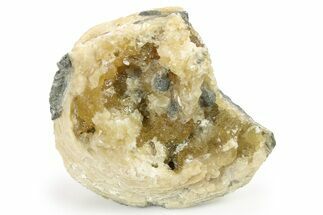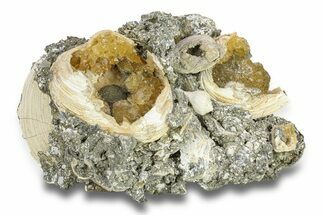This Specimen has been sold.
15.5" Cretaceous Rudist (Durania) Colony with Oysters - Kansas
This is a 15.5" wide cluster of fossil rudists of the species Durania maxima. They come from the Late Cretaceous Niobrara Formation (~83 million years) in Gove County, Kansas. There are a variety of other small marine bivalves scattered across this specimen. Specifically, a large gathering of Pseudoperna congesta oysters. Comes with a display stand.
A rudist is a ring-shaped marine heterodont bivalve that arose during the Late Jurassic and died out near the end of the Cretaceous. Durania maxima rudists had heavy cone-shaped shells, often with a large circular collar, and are typically found in the lower third of the Smoky Hill Chalk.
The Smoky Hill Chalk Member of the Niobrara Chalk formation is a Cretaceous conservation Lagerstätte, or fossil-rich geological formation, known primarily for its exceptionally well-preserved marine reptiles. It outcrops in parts of northwest Kansas--its most famous localities for fossils--and in southeastern Nebraska. Large, well-known fossils excavated from the Smoky Hill Chalk include marine reptiles such as plesiosaurs, large bony fish such as Xiphactinus, mosasaurs, pterosaurs, and turtles.
SPECIES
Durania maxima & Pseudoperna congesta
LOCATION
Gove County, Kansas
FORMATION
Niobrara Formation
SIZE
15.5 x 9.5"
CATEGORY
ITEM
#197350
We guarantee the authenticity of all of our specimens.
 Reviews
Reviews












